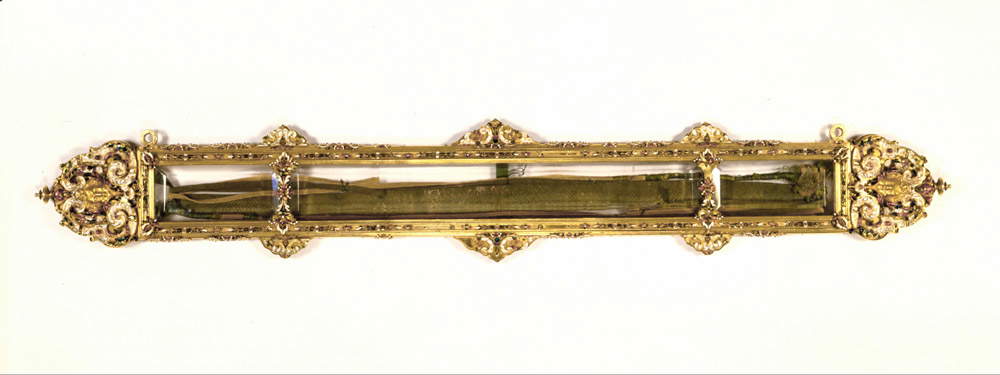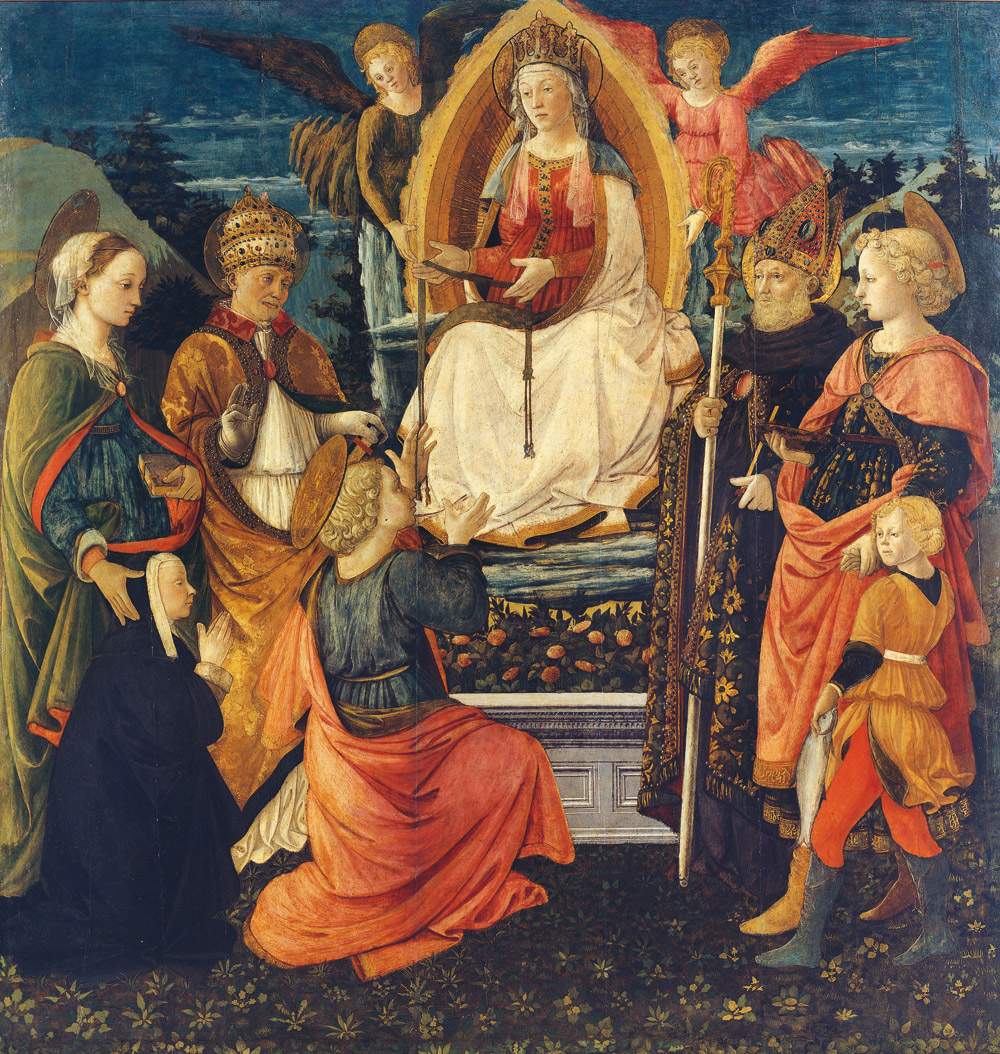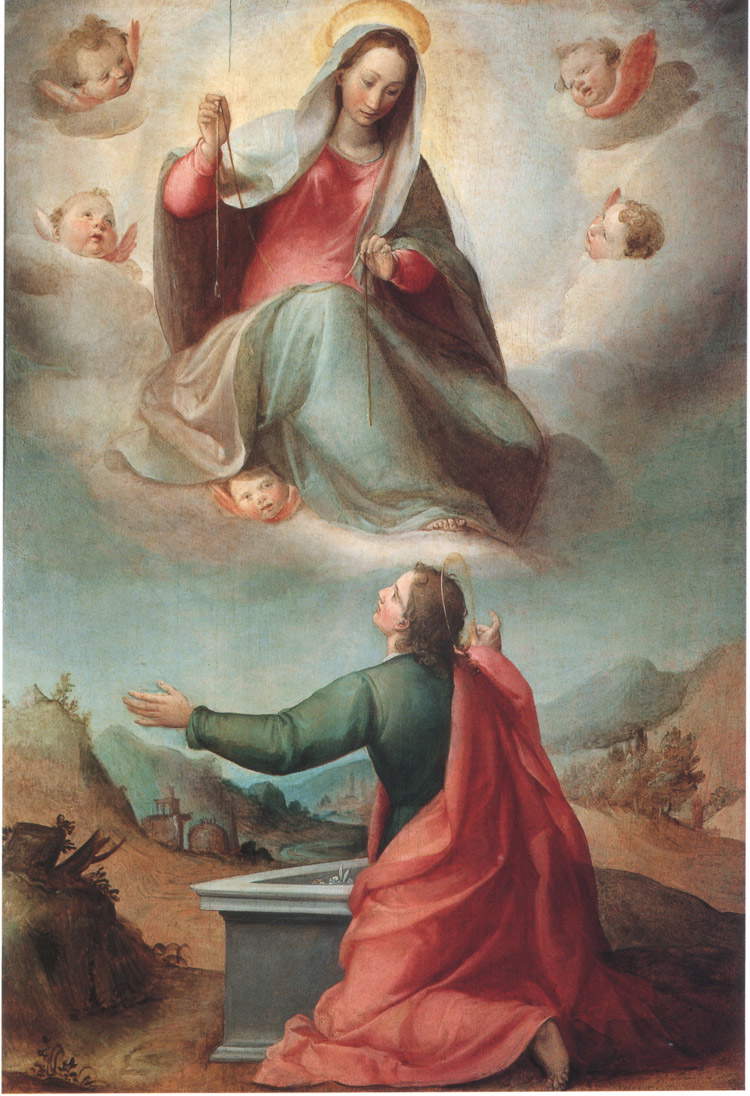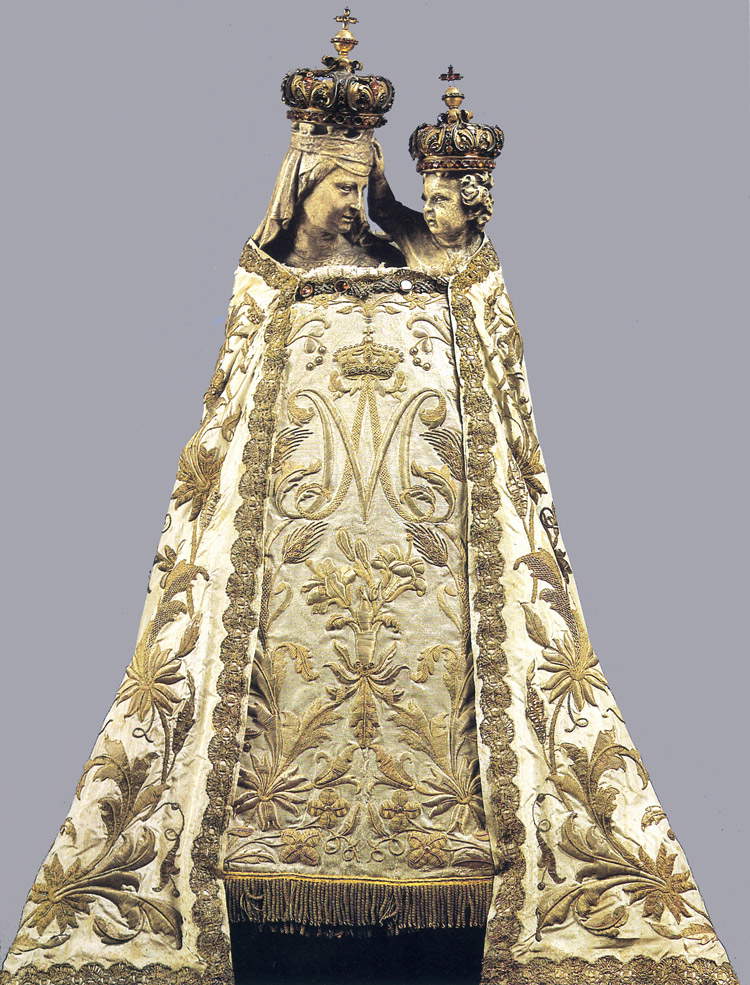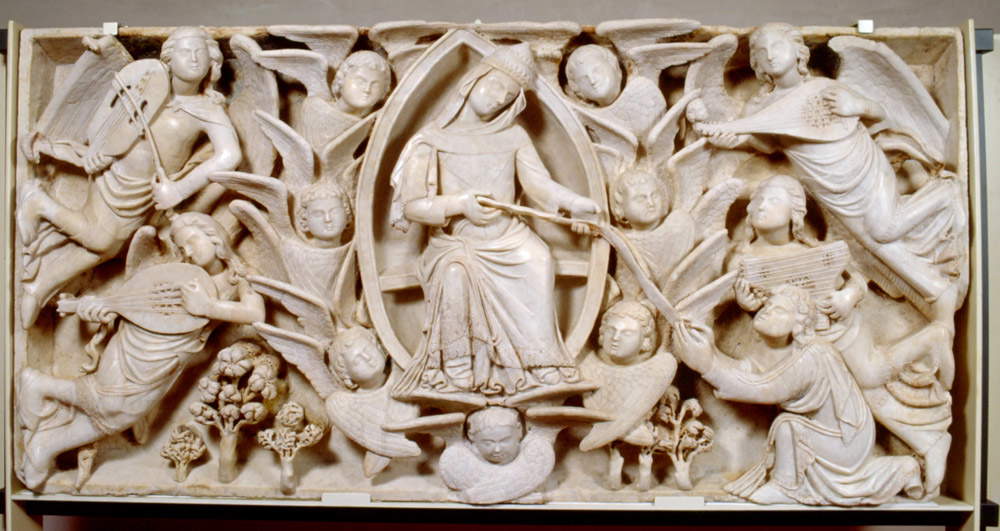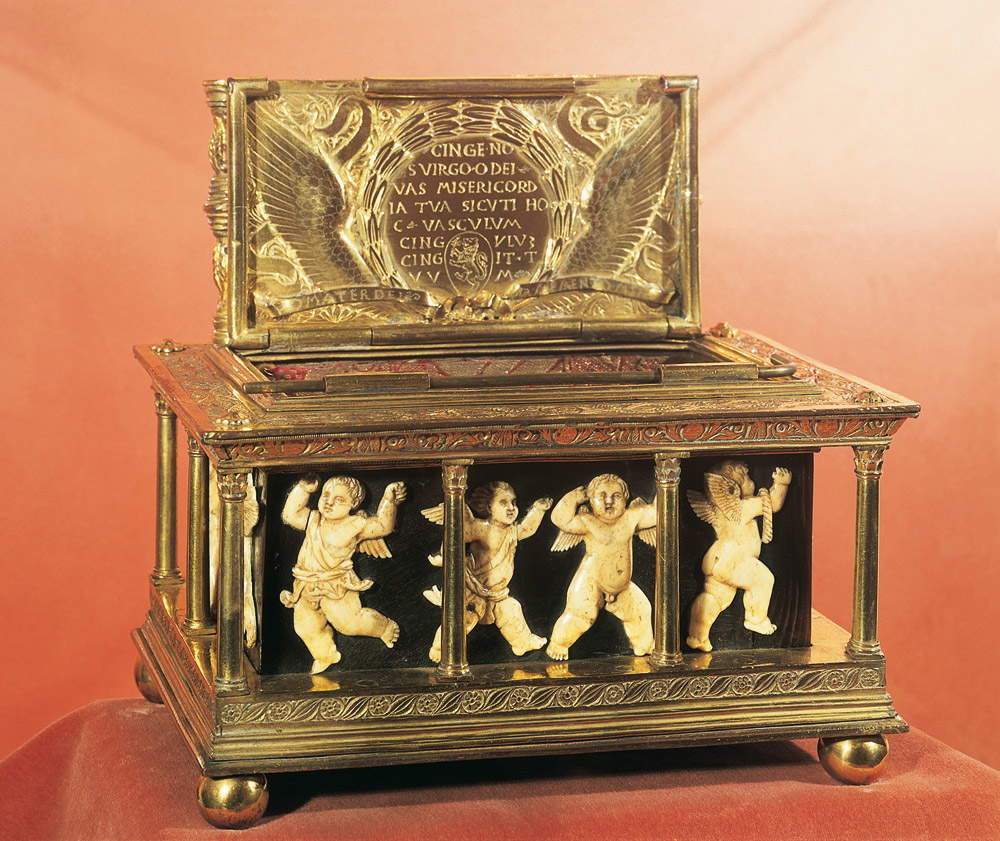by Redazione , published on 01/08/2017
Categories: Exhibitions
- News Focus / Disclaimer
An exhibition on the Sacred Girdle, the city's iconic relic, opens Sept. 7 at the Museo di Palazzo Pretorio in Prato, featuring names of great artists.
Opening in Prato in just over a month will be the major exhibition dedicated to the Sacred Girdle, the relic preserved in the Tuscan city, which has always been the object of the attentions of the greatest artists as well as of a cult that has been rooted in these lands for centuries, and has become not only a religious but also a civic symbol of the city (on these very pages we had dedicated a lengthy in-depth study to the cult of the Sacred Girdle, seen through works of art). The exhibition is entitled Legati da una cintola. Bernardo Daddi’s Assumption and the Identity of a City and is scheduled at Prato’s Palazzo Pretorio Museum, in the exhibition spaces of the former Monte dei Pegni (pawnshop), from September 7, 2017 to January 14, 2018.
The Sacred Girdle of Prato, an 87-centimeter-long strip of wool, greenish, brocaded in gold and headed by two cords, will be the centerpiece around which the exhibition will revolve. According to legend, Our Lady is said to have handed her own belt to St. Thomas after the Assumption to prove to the unbelieving apostle that she had truly ascended into heaven. Also in accordance with tradition, a merchant from Prato, Michele Dagonari, is said to have brought it to Prato around 1141 and donated it in 1172 to the proposed parish of Santo Stefano (the Cathedral of Prato, where the relic is still kept today). The events of the Sacred Girdle were narrated by the painter Bernardo Daddi (Borgo San Lorenzo, c. 1290 - Florence, 1348) in the predella that was formerly part of a polyptych that has now been dismembered and will be reunited precisely on the occasion of the exhibition: it is the altarpiece of the Assumption, which will be displayed in the first section of the exhibition, which, in turn, will be preceded by an introduction entrusted to a relief by the Master of Cabestany, a Romanesque artist who was active between France and Italy in the 12th century and who is featured in the exhibition with an Assumed Madonna giving her girdle. The first section is entitled precisely “From Cabestany to Prato: genesis of a theme,” while the second, which as anticipated will include the recomposition of the altarpiece, is entitled “Bernardo Daddi’s Prato altarpiece returned.”
The third section (“Bernardo Daddi narrator”) will display other works of Giottesque scope to better contextualize the work of Bernardo Daddi. This will be followed by a fourth (“The Sacred Girdle, Profane Girdles and Giovanni da Milano”) that will delve into the girdle as an object, also making use of works from the 14th century (thus from Daddi’s time) where the accessory is exhibited: central will be a St. Catherine painted by Giovanni da Milano for the Spedale della Misericordia in Prato (this is one of the most valuable pieces in the Museum of Palazzo Pretorio). The fifth section, on the other hand, will investigate iconography in the context of 14th-century Tuscan art (“The Assumption and the Girdle: Variations in Fourteenth-Century Tuscany”): there will be paintings, miniatures and sculptures referring mainly to the areas of Florence and Siena. In the Florentine area, the iconographic theme of St. Thomas grasping the girdle on the fly prevails, while in the Sienese area the theme of the Madonna dropping the object is more widespread. On the other hand, the sixth section (“The Assumption and the Girdle: the following tradition”) will be dedicated to the Assumption: a selection of Tuscan works is planned, with particular emphasis on productions from the Prato area. The seventh and final section (“The Cult and the Exposition of the Sacred Girdle in Prato and Tuscany”) will instead focus on the cult of the Sacred Girdle in Prato: exhibited will be documents, cases, furnishings and all the apparatuses necessary for the religious functions in which the Sacred Girdle was the protagonist.
The exhibition will also be an opportunity to tour the places that have marked the history of Prato and are linked to the cult of the relic. Starting with Donatello and Michelozzo’s pulpit(further detailed discussion here), commissioned from the two great artists in the first half of the 15th century: its purpose was to accommodate the priest exclusively for the ostension of the Sacred Girdle, which takes place, at present, five times a year (at Easter, on May 1, on the day of the Assumption, or August 15, on the day of the Nativity of Mary, or September 8, and at Christmas), except for the extraordinary ostensions that take place, for example, on the occasion of visits by popes. Formerly placed on the facade of the cathedral, today the pulpit has been replaced on site by a copy and transferred to the local Museo dell’Opera del Duomo. Again, there will be an opportunity to visit the Chapel of the Sacred Girdle, the place where the relic is kept: it is entirely decorated with frescoes by Agnolo Gaddi dedicated to the Stories of the Virgin and the Stories of the Girdle, and it houses a sweet Madonna and Child by Giovanni Pisano. Finally, don’t miss Filippo Lippi ’s cycle decorating the Duomo’s Maggiore Chapel: these are the Stories of St. Stephen and the Stories of St. John, painted between 1452 and 1465. They are one of the most important fresco cycles of the entire Renaissance.
The theme of the Sacred Girdle, we read in the exhibition presentation, “allows us to shine an intense beam of light on an age of great prosperity for Prato, the 14th century, starting with the commissions to first-rate artists such as the sculptor Giovanni Pisano and the painter Bernardo Daddi, who gave resonance to Marian devotion in Prato as a true civic cult. The exhibition takes its cue from that precious symbol of undeniable identity value to weave the threads of a narrative that speaks of the city and its rich heritage of culture and beauty guarded in the territory and recognizable beyond local borders.”
The exhibition is curated by Andrea De Marchi and Cristina Gnoni Mavarelli. The scientific committee, of the highest level, is composed of Claudio Cerretelli, Fulvio Cervini, Keith Christiansen, Marco Ciatti, Enrico Colle, Daniela Degl’Innocenti, Andrea De Marchi, Renzo Fantappiè, Cristina Gnoni Mavarelli, Rita Iacopino, Isabella Lapi Ballerini, Antonio Paolucci, Marco Pratesi, Carl Brandon Strehlke, and Diana Toccafondi. The exhibition is sponsored by the City of Prato and the Museum of Palazzo Pretorio, in collaboration with the Diocese of Prato. Hours: daily from 10:30 a.m. to 6:30 p.m. Closed Tuesdays (except holidays). Admission, also valid for the museum in Palazzo Pretorio: 12 euros (reduced 10). Reservations at 0574 19349961, Monday to Friday 9 a.m. to 6 p.m., Saturday 9 a.m. to 2 p.m. Info: www.palazzopretorio.prato.it
.
Here is a selection of the works on display:
 |
| Alessandro Cella, Reliquary of the Holy Girdle (1638; Diocese of Prato) |
 |
| Bernardo Daddi, Stories of the Sacred G irdle (1337-39; Prato, Museo di Palazzo Pretorio) |
 |
| Bernardo Daddi, The Assumption of the Virgin (1337-39; New York, The Metropolitan Museum of Art, Robert Lehman Collection) |
 |
| Filippo Lippi and Fra’ Diamante, The Madonna of the Girdle (1456-65; Prato, Museo di Palazzo Pretorio) |
 |
| Ludovico Buti, Madonna Giving the Girdle to St. Thomas (1588-90; Prato, Museo di Palazzo Pretorio) |
 |
| Giovanni Pisano, Madonna and Child, parade with dalmatic and mantle (1775), Diocese of Prato |
 |
| Niccolò di Cecco del Mercia, The Assumption offering the Girdle to St. Thomas (c. 1340-60; Diocese of Prato) |
 |
| Bottega di Salvestro Mascagni, Teca in silver, (1633; Diocese of Prato) |
 |
| Maso di Bartolomeo, Chapel of the Holy Girdle (1446-48; Diocese of Prato) |
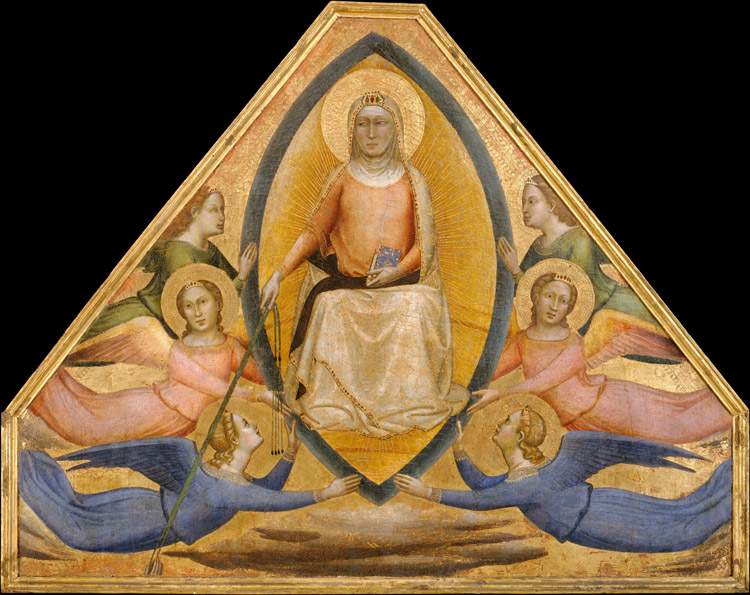 |
| A major art exhibition in Prato around the Holy Girdle as a religious and civic symbol |
Warning: the translation into English of the original Italian article was created using automatic tools.
We undertake to review all articles, but we do not guarantee the total absence of inaccuracies in the translation due to the program. You can
find the original by clicking on the ITA button. If you find any mistake,please contact us.
